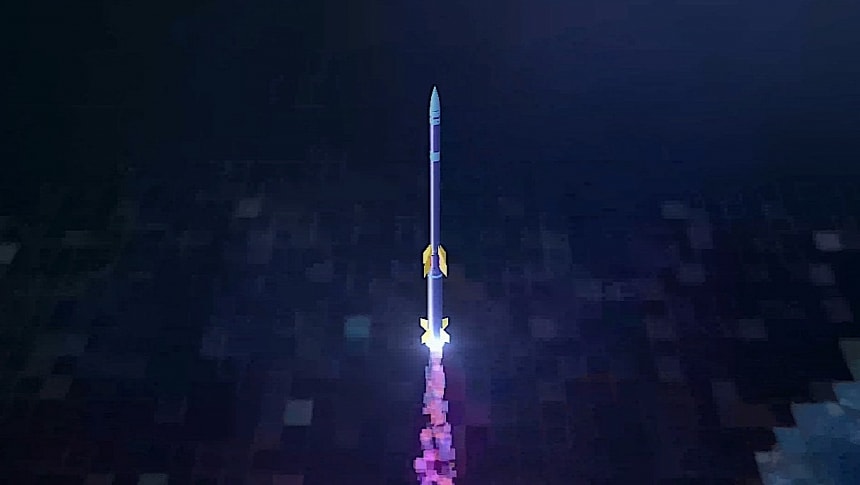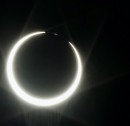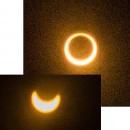There was probably a time back when humanity was young when solar eclipses caused big concerns for our ancestors. Some of them hid in fear, others probably threw stuff at the black monster that was eating the Sun, while others performed all sorts of rituals. For an outside observer, that's exactly what humanity keeps doing even today.
It is on April 8 when a solar eclipse will manifest itself once more, covering parts of the United States (a strip running from Texas to Maine) in total shadow for a brief period of time. It's a moment so important for the people there that the event even got its own impressive name: the Great North American Eclipse.
As one of the world's largest space agencies, NASA plans to make the most of it. It has already announced an effort to determine exactly how round the Sun is as part of a project called SunSketcher.
In a nutshell, NASA has tasked everyday Americans with snapping instances of the eclipse using a specially-developed app in a bid to trace the tiny slivers of sunlight that pass through the valleys on the surface of the Moon during the event. These so-called Baily's beads will help the agency more accurately determine the shape and size of the star that lights the days in our solar system.
But that's not the only eclipse-related experiment NASA will be conducting. With about two weeks left until the Sun hides behind the Moon, the agency revealed it too will throw something at the Moon – or, more precisely, at its shadow.
A total of three rockets will lift off from the Wallops Flight Facility in Virginia during the eclipse, heading up into the darkness. They are not regular ones, but of the variety NASA likes to call sounding rockets – vehicles that can spend up to 20 minutes in speed and travel at far lower speeds than their bigger siblings to give the instruments on board time to do their thing.
The three rockets are collectively called Atmospheric Perturbations around Eclipse Path (APEP), and they are meant to study the disturbances that are generated in the atmosphere (at altitudes of between 55 and 310 miles/90 and 500 km) when the Moon shadows the Sun.
NASA will send the rocket up in stages. The first one will depart 45 minutes before the peak of the eclipse, the second one right during the event, and the final rocket 45 minutes after the eclipse has ended.
According to NASA, these intervals "are important to collect data on how the Sun's sudden disappearance affects the ionosphere, creating disturbances that have the potential to interfere with our communications."
We'll probably see what NASA learns from this experiment soon after the flights end. In the meantime, remember to properly protect your eyes when trying to look up at the celestial spectacle taking place in early April.
As one of the world's largest space agencies, NASA plans to make the most of it. It has already announced an effort to determine exactly how round the Sun is as part of a project called SunSketcher.
In a nutshell, NASA has tasked everyday Americans with snapping instances of the eclipse using a specially-developed app in a bid to trace the tiny slivers of sunlight that pass through the valleys on the surface of the Moon during the event. These so-called Baily's beads will help the agency more accurately determine the shape and size of the star that lights the days in our solar system.
But that's not the only eclipse-related experiment NASA will be conducting. With about two weeks left until the Sun hides behind the Moon, the agency revealed it too will throw something at the Moon – or, more precisely, at its shadow.
A total of three rockets will lift off from the Wallops Flight Facility in Virginia during the eclipse, heading up into the darkness. They are not regular ones, but of the variety NASA likes to call sounding rockets – vehicles that can spend up to 20 minutes in speed and travel at far lower speeds than their bigger siblings to give the instruments on board time to do their thing.
The three rockets are collectively called Atmospheric Perturbations around Eclipse Path (APEP), and they are meant to study the disturbances that are generated in the atmosphere (at altitudes of between 55 and 310 miles/90 and 500 km) when the Moon shadows the Sun.
NASA will send the rocket up in stages. The first one will depart 45 minutes before the peak of the eclipse, the second one right during the event, and the final rocket 45 minutes after the eclipse has ended.
According to NASA, these intervals "are important to collect data on how the Sun's sudden disappearance affects the ionosphere, creating disturbances that have the potential to interfere with our communications."
We'll probably see what NASA learns from this experiment soon after the flights end. In the meantime, remember to properly protect your eyes when trying to look up at the celestial spectacle taking place in early April.














